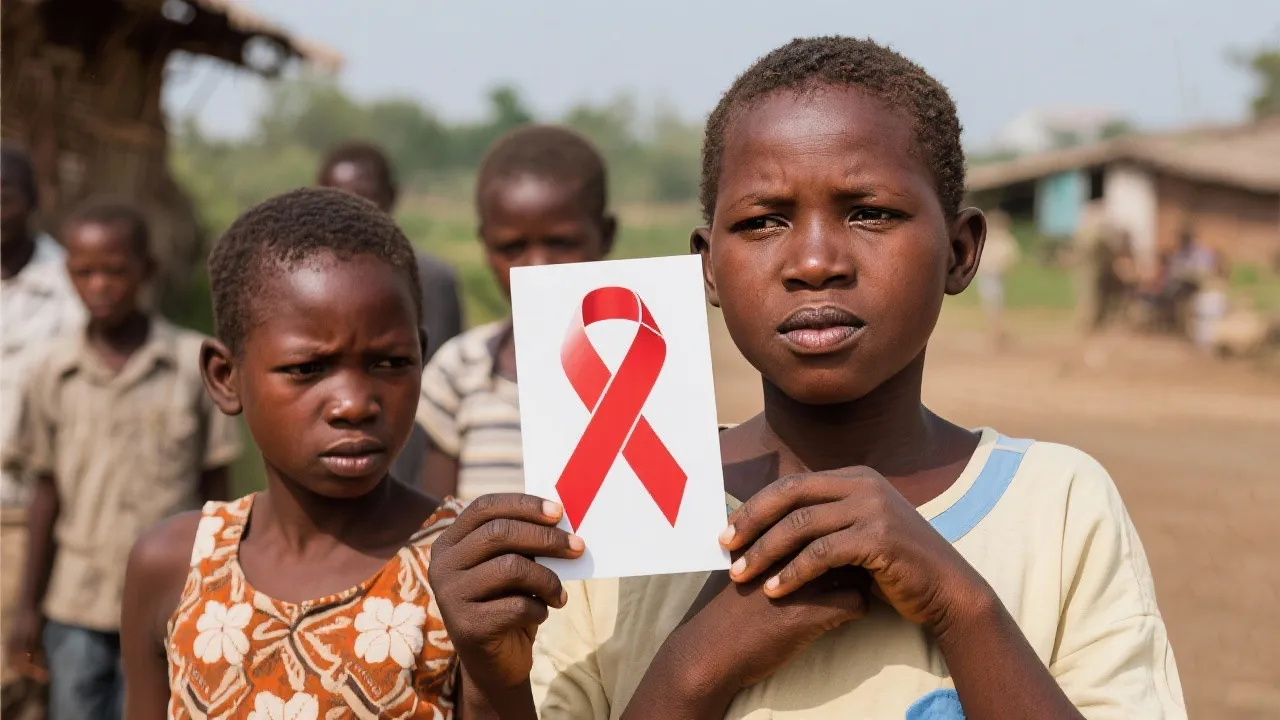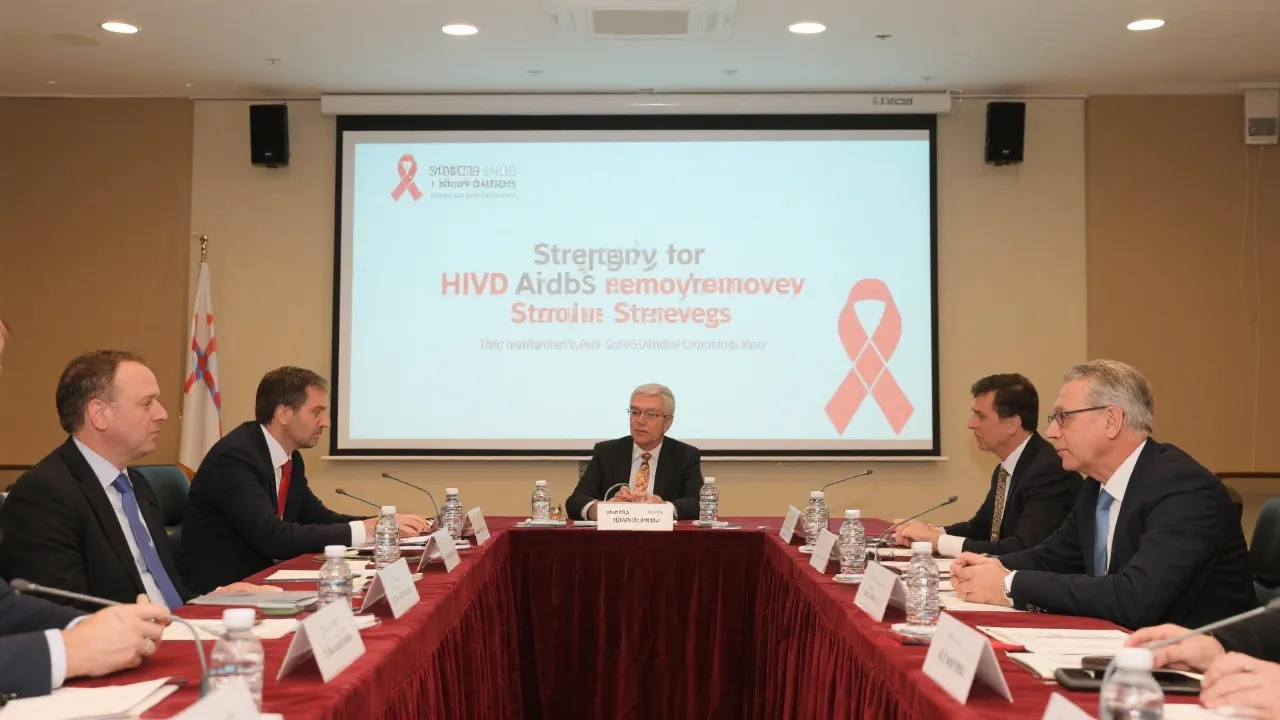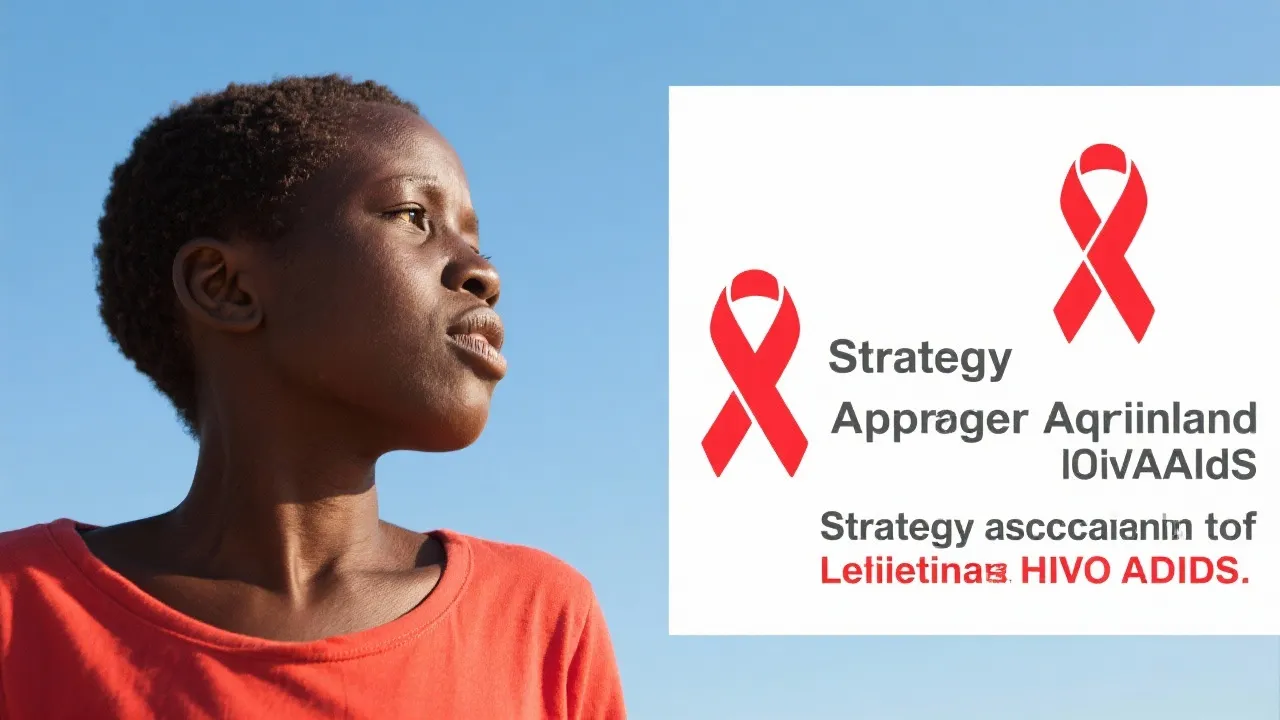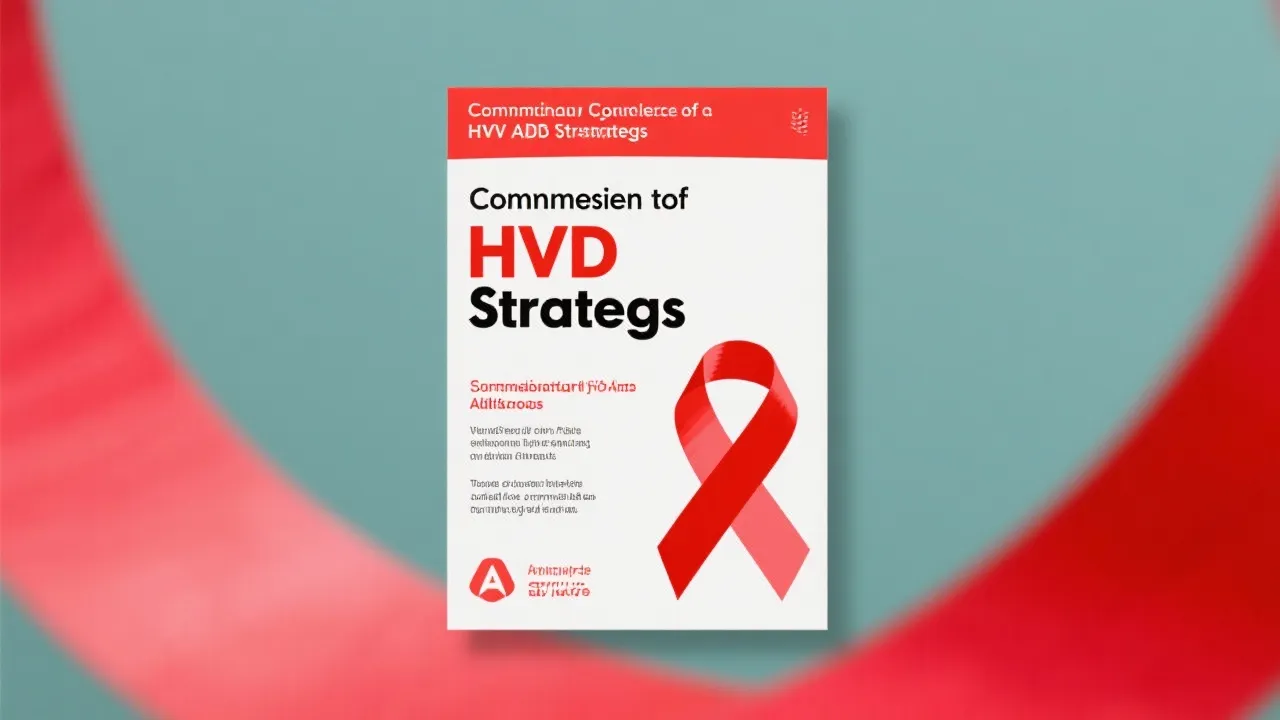Examining HIV/AIDS Alleviation Strategies
This guide explores various strategies developed to alleviate HIV/AIDS, a persistent global health challenge. It delves into the multifaceted approaches employed worldwide, aiming to curb the virus's spread while enhancing affected individuals' quality of life. Understanding these strategies provides insight into global health efforts and inspires further innovation and collaboration.

Introduction to HIV/AIDS
The human immunodeficiency virus (HIV) and acquired immunodeficiency syndrome (AIDS) continue to pose significant global health challenges, with millions affected worldwide. This article examines the strategies developed to alleviate these issues, highlighting the ongoing efforts to prevent, manage, and ultimately eradicate these conditions. HIV is transmitted through bodily fluids and, if left untreated, can lead to AIDS, a condition characterized by the progressive failure of the immune system, leaving individuals vulnerable to opportunistic infections and certain cancers. Understanding the complexities of HIV transmission, disease progression, and the psychological and social implications is essential for addressing this public health issue comprehensively.
Comprehensive Prevention Strategies
Prevention remains a cornerstone in the fight against HIV/AIDS. Effective strategies are multi-faceted and include widespread education campaigns promoting safe sex practices, the distribution of condoms, and ongoing support for at-risk populations. Research has shown that consistent condom use can reduce the risk of HIV transmission significantly. Additionally, initiatives targeting youth education, such as age-appropriate sexual health education in schools, can empower individuals with information to make safer choices.
Furthermore, pre-exposure prophylaxis (PrEP), a medication that significantly lowers the risk of HIV infection for individuals at high risk, is gaining traction as a preventive measure. Available as a daily pill or an injectable option, PrEP has been transformative in the lives of many, especially among populations such as men who have sex with men (MSM), intravenous drug users (IDUs), and heterosexual individuals at risk due to their partners being HIV positive. Initiatives that facilitate access to PrEP, such as community health clinics and outreach programs, have emerged as vital components of HIV prevention.
Alongside PrEP, regular testing and counseling represent critical elements in a comprehensive prevention strategy. Knowing one’s HIV status can prompt individuals to seek further care and treatment, reducing the likelihood of transmission to others. New technologies, including home-based testing and self-testing kits, have made it easier for individuals to check their status discreetly, promoting more people to engage with HIV health services.
Treatment Approaches
Advancements in antiretroviral therapy (ART) have transformed HIV/AIDS from a fatal disease to a manageable chronic condition. ART involves taking a combination of HIV medicines every day as prescribed and helps to lower the viral load in a person’s body to “undetectable” levels. This not only extends patients' lives significantly but also drastically reduces the virus's transmission risk, as individuals with an undetectable viral load are unable to transmit the virus to sexual partners, a concept often summed up by the slogan "Undetectable = Untransmittable (U=U)." Ensuring access to these medications is critical, and many efforts are being made globally to make ART affordable and accessible.
Moreover, the emergence of long-acting antiretrovirals, such as cabotegravir and rilpivirine, offers alternatives to daily pills, easing the burden for patients who may have difficulty adhering to a daily regimen. These innovations represent a significant step forward in HIV treatment as they come with fewer doses per month or even per year, facilitating greater adherence among patients, improving their health outcomes, and reducing the risk of transmitting the virus.
Efforts to integrate mental health support into HIV treatment plans have also gained momentum. Individuals living with HIV often face mental health challenges, including depression and anxiety linked to the stigma surrounding the disease. Programs that provide counseling, peer support, and group therapy can enhance the overall quality of life for those living with HIV, ensuring they remain engaged with their treatment regimens and healthcare providers.
HIV/AIDS in the Community
Community-based interventions are indispensable for managing and preventing HIV/AIDS. These initiatives often involve collaborating with local leaders, grassroots organizations, and healthcare providers to reach underserved populations. By fostering an environment that promotes testing and treatment, communities can become powerful advocates for their members. Tailoring interventions to address cultural and social norms is essential, as belief systems often influence individuals' decisions regarding healthcare.
Outreach programs that respect cultural identities and engage community leaders have demonstrated success in increasing testing rates and awareness. For example, in marginalized communities, programs that are crafted to include trust-building initiatives have proven effective in mobilizing individuals to get tested. Incorporating local champions or influencers into these campaigns helps bridge the gap between healthcare providers and the community, encouraging participation in preventive measures and treatment options.
Additionally, the integration of technology in community outreach—through social media platforms, apps, and telehealth services—has enhanced accessibility, particularly for younger demographics. Virtual support groups and educational sessions conducted online can reach individuals who may otherwise not attend in-person meetings due to stigma or logistical barriers. Educational animations and infographics shared online can provide vital information about HIV prevention and treatment, helping to demystify the virus and engage a broader audience.
Addressing Stigmatization and Discrimination
Tackling the stigma associated with HIV/AIDS is essential for effective prevention and treatment. Discrimination against individuals living with HIV can lead to social isolation, mental health problems, and negative health outcomes. Numerous campaigns aim to educate the public, dispel myths, and promote equality and respect for those affected. By reframing the narrative surrounding HIV/AIDS, these efforts seek to humanize those living with the disease and foster public understanding about the virus as a manageable health condition rather than a moral failing.
Partnerships with advocacy organizations focusing on human rights have launched initiatives aimed at changing public perceptions, educating on modes of transmission, and emphasizing the importance of compassion and understanding. Media campaigns utilizing personal stories from individuals living with HIV have also been effective in relating the human experience behind the statistics, allowing for greater empathy and support within communities.
Furthermore, governments and healthcare institutions must also engage in anti-discrimination policies that protect the rights of individuals living with HIV. Providing legal protection against workplace discrimination and ensuring access to healthcare without bias are crucial components of a comprehensive strategy to combat stigma. Incorporating lived experiences of those affected in policymaking can also guide legislation that protects their rights, promoting dignity and respect in all areas of life.
Research and Innovation
Ongoing research is integral to advancing the battle against HIV/AIDS. Scientists continually explore new treatments, vaccines, and potential cures. Innovations in vaccine development, such as mRNA technology, which was highlighted during the COVID-19 pandemic, are being investigated for their applicability to HIV prevention. Collaborative research efforts, involving institutions across the globe, have accelerated discoveries, offering hope for more effective strategies to combat the epidemic in the future.
Moreover, research into the psychosocial dimensions of HIV is becoming increasingly important. Understanding the barriers that individuals face concerning treatment adherence—such as mental health difficulties, socio-economic factors, and systemic inequities—can play a crucial role in designing effective interventions. Community-based participatory research (CBPR) engages affected populations in the research process, ensuring that findings are relevant and effectively address the target community's unique challenges.
With advancements in gene editing technologies, such as CRISPR, strategies aimed at eradicating HIV from an individual’s body are being explored. Initial trials have shown promise, shedding light on the potential to either eliminate the virus or create a functional cure where virus levels remain undetectable without antiretroviral therapy. This revolutionary approach represents an ongoing frontier of HIV/AIDS research, providing hope for individuals living with the virus.
Global Efforts and Collaborations
International organizations such as the World Health Organization (WHO) and UNAIDS play crucial roles in coordinating global responses to HIV/AIDS. By setting targets—such as the 95-95-95 goals established to ensure that by 2030, 95% of people living with HIV know their status, 95% of those diagnosed are on treatment, and 95% of those on treatment achieve viral suppression—they guide countries in their strategic plans. Fostering collaborations between countries through shared resources, knowledge transfer, and technical assistance helps to magnify the impact of interventions.
For example, initiatives like the Global Fund and the President's Emergency Plan for AIDS Relief (PEPFAR) have financed extensive prevention and treatment programs across the world. These programs have significantly contributed to reducing new infections in various regions, particularly in Sub-Saharan Africa, where the burden of the epidemic remains the highest. Such international investments in health infrastructure have also stimulated local economies by creating jobs in healthcare and education sectors.
However, it is essential for these collaborations to be inclusive and adaptive, accounting for local etiologies and cultural specifics. Efforts must be genuinely led by local communities, ensuring that they have control over the strategies implemented within their regions. Building local capacity not only increases the sustainability of interventions but enhances ownership and accountability in the fight against HIV/AIDS.
Challenges and Future Directions
While significant progress has been made against HIV/AIDS, serious challenges persist. Factors such as addressing the virus's evolving nature, securing sustained funding, and eliminating new infections—particularly in regions with high prevalence rates—remain key obstacles. The emergence of drug-resistant HIV strains necessitates ongoing vigilance and research to refine existing treatments and avoid setbacks in prevention efforts.
Furthermore, the disparities in access to testing and treatment services between urban and rural areas, as well as among different socio-economic groups, highlight an ongoing need for targeted strategies that foster equity in health access. Innovative approaches that incorporate community-driven solutions can address these disparities and optimize the impact of available interventions.
Future strategies will likely focus on integrating new technological advancements with traditional approaches to maximize impact. Harnessing digital health solutions, such as mobile phone applications for medication reminders or telehealth consultations, are being recognized as vital for a sustainable future in HIV care. Initiatives that empower patients through personalized treatment plans and continuous monitoring of health metrics are also expected to evolve.
Moreover, addressing social determinants of health—such as housing, employment, and mental health care—should be at the forefront of discussions about HIV prevention and treatment. The interconnected nature of healthcare and societal challenges indicates that a more holistic approach, involving multiple sectors, can produce better outcomes for those affected by HIV/AIDS.
Comparative Overview of HIV/AIDS Alleviation Strategies
| Strategy | Description |
|---|---|
| Education Campaigns | Raise awareness about HIV transmission and prevention through widespread information dissemination to empower individuals with knowledge. |
| PrEP Implementation | Provide pre-exposure prophylaxis to at-risk populations to reduce infection rates, ensuring access to essential medications. |
| ART Access | Facilitate antiretroviral treatment to manage HIV effectively, improving the quality of life and life expectancy for individuals living with the virus. |
| Community Initiatives | Engage local entities and stakeholders to support testing, prevention, and treatment efforts tailored to community needs. |
| Anti-stigma Activities | Combat discrimination through educational efforts and advocacy, encouraging individuals to seek testing and treatment. |
| Research Advances | Continue innovative research to develop better treatments, vaccines, and potential cures, involving diverse collaborations. |
FAQs
- What is the role of ART in HIV/AIDS management?
Antiretroviral therapy (ART) is crucial for transforming HIV/AIDS into a manageable chronic condition by effectively reducing viral load, improving immune function, and decreasing transmission risk.
- How does community involvement enhance HIV/AIDS strategies?
Community involvement helps tailor prevention and treatment efforts to local needs, fostering trust, enhancing engagement, and leading to improved program effectiveness and sustainability.
- Why is combating stigmatization important?
Reducing stigmatization encourages individuals to seek timely testing and treatment without fear of social judgment, ultimately enhancing the overall success of health interventions and reducing new infections.
- What future strategies are anticipated for HIV/AIDS?
Future strategies may integrate technological advancements with traditional methods to enhance prevention, treatment, and research outcomes. Holistic approaches addressing social determinants of health will likely also gain importance.





